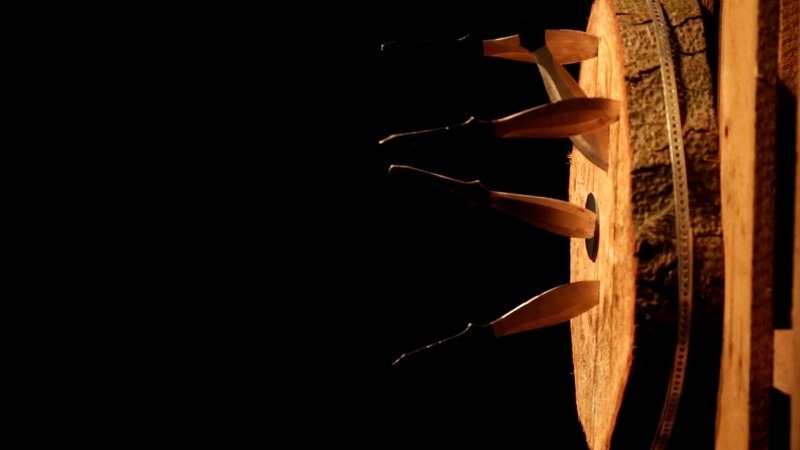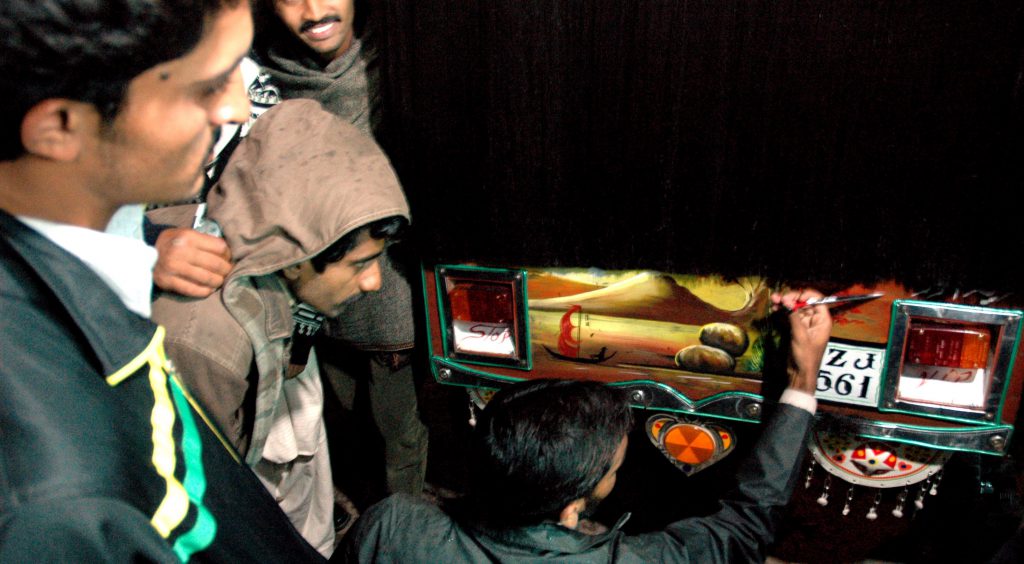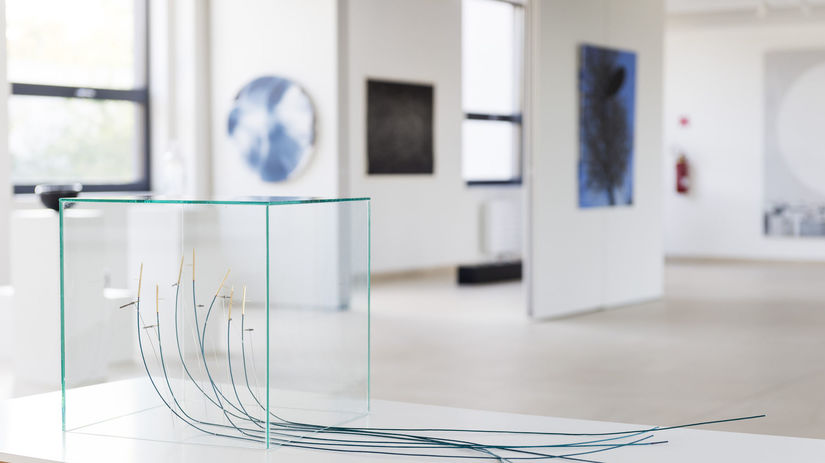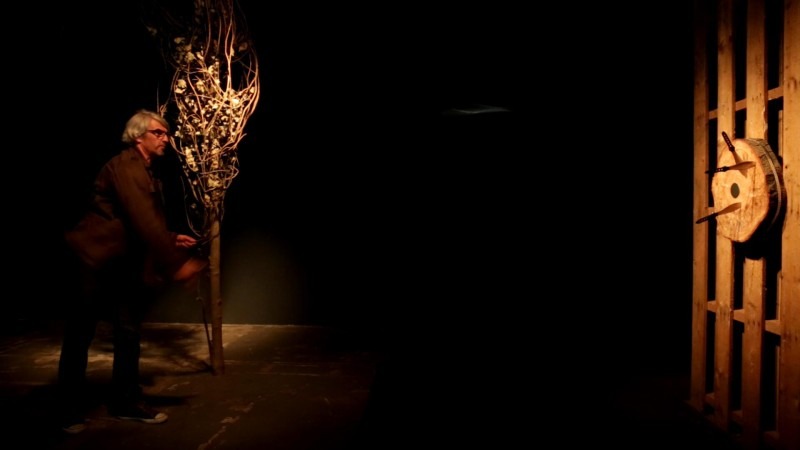Essay / BEYOND THE FORMAL IN JEWELRY
Author jewelry seems to be changing its appearance.
Author jewelry seems to be changing its appearance in the practice of the younger generation of makers today. Jewelers are re-evaluating their relationship to the medium, its spatial boundaries, the possibilities of its presentation and the relationship between jewelry, and the viewer/ wearer. This new work often balances on the edge between fine and applied arts. Some of these works on the edge can no longer be perceived as jewelry in the conventional sense of the word. They push the boundaries of author jewelry towards new forms and ways of engaging with the audience, towards its new performativity, by creating authentic situations and processes that allow the audience actively participate in the work and thus become part of it.
-

Gisbert Stach , Wurfmesser, 2015,videostill. Photo: Simon Bruck
The impulse for this article were jewelry works of emerging artists that are no longer just jewelry, but neither can they be understood as sculpture, painting, performance or installation in the traditional sense. These works exceed the traditional art categorization, by intersecting with other media. They do not consider static form as their final form, but rather, they open a discussion and space to explore ways and means of active communication and engagement of the viewer/wearer in the context of the work. They build on the conceptual jewelry tendencies of the 20th century represented by Otto Künzli, Peter Skubic and Bernhard Schobinger, among others, but their openness lies in their hybridity and performativity against different cultural and social background. Where is the place for these works? How do they reflect upon author jewelry and what is their significance for expanding the perception and new contexts of the medium?
-

Carla Castiajo, 2006, Black Diamond, video. Photo: David Alesworth
Performativity in jewelry is often described and perceived as (1) the effect of its material, i.e. immediate material properties such as color, luster, surface, weight, temperature and properties associated with cultural and social conventions such as value, and pricing. Under the concept of performativity falls also (2) the way jewelry is used by the wearer or owner, i.e. to represent in public, as a personal talisman, adornment or commodity. In a wider context ,(3) performativity can be understood as the process by which the work was created. In other words, performativity involves issues of process, function, changeability, significance, event, or program and therefore can be interpreted as what jewelry does rather than what it is.
This article explores more closely performativity in jewelry as a process of making. In most cases, the process of making takes place among four walls of the artist´s studio and the viewer is confronted solely with its outcome. But what if the work is created directly in the exhibition space and becomes an performance or event?
-
-

Pavol Prekop, Space Race, 2017, jewelry installation. Photo: Adam Šakový
The primary performative value of jewelry lies in its materiality – the ability to change its appearance, surface, or colour, form due to its use, time, and environmental exposure. However, if the change of the form, surface, colour is the result of an intended intervention of the environment, author or audience, the perception of permanent and changeless form is subject to the authentic experience here and now.
-
A prime example of this is the work “Wurfmesser” by German jeweler Gisbert Stach. The performance “Wurfmesser” (Throwing Knives) was held at announced times in the premises of the closed underpass of MaximiliansForum during Munich Jewelry Week 2015.[1] Stach as the author of the performance was throwing knives trying to stab a circular aluminum brooch hanging on a wooden wall. The viewer was standing behind the wooden wall and could observe the throwing of knives through a peephole. The result of Stach´s performance was a punctured aluminium brooch, which the viewer was then able to buy and wear. In the case of the performance “Wurfmesser“, the boundary and formal separation between the exhibited artwork and viewer/wearer was abolished as well as the line between the viewer and the author. The pierced brooch creates emotionality that is frequently encountered in keepsakes that have lost their original beauty and function, but they still remain in our homes because of their emotional value.
-
-

Gisbert Stach , Wurfmesser, 2015,videostill. Photo: Simon Bruck
Another example of jewelry as a performance is the work “Space Race” by the Slovak jeweler Pavol Prekop. Prekop examines the boundary between jewelry as a material object and its potential to become a game and an experience for the viewer / wearer. In the work Space Race, exhibited at Hot Dock Gallery in Bratislava, the audience was presented with brooches in the shape of rockets with fuse. The rocket brooches were in a glass showcase and matches were placed next to it. The installation was intended as a dialogue with the spectator who was encouraged by the artist to take action and ignite one of the cords sticking out from under the showcase and thus become part of the work. The performativity of the work created tension between what is visible and what is possible. The work “Space Race” is part of author´s larger project Bleskové šperky (Flash Jewelry) and was accompanied during the exhibition by a short film and an audio story presenting the theme flash jewelry through fictional stories. [2]
-
The Portuguese jeweler, Carla Castiajo, often deals with a material that has been repeatedly used in art and jewelry for centuries and has strong cultural significance – hair. During her pedagogical stay at the Beaconhouse National University in Pakistan, the artist created a project titled “Black Diamond“, that worked with rickshaw as one of the popular ways of transport in the country. She exchanged the back part of a rickshaw, which is mostly richly decorated, for a curtain of long black hair. The artist created an event in public space documented by a video which aimed to investigate the reactions to the material that hides both beauty and unease and provokes different cultural readings, reactions and impressions.[3] Even though the work cannot be considered as a wearable jewelry, it refers to the art medium in the context of the artist and opens up the dichotomy between the formal and the material, the visibe and the intangible in jewelry.
The common feature of the works mentioned above is their aim to disturb and abolish the boundaries between object and subject, between author and the audience and to create critical situations that expose jewelry as an art medium to a broader interpretation and perception. Performativity as performance and event bring authenticity of time and active communication to the field of author jewelry that is based not only on visual perception, but rather sensual experiencing and interaction.
Despite these works open and challenge the conventional perceptions of form and material, they remain as an alternative jewelry practice to the works exhibited in galleries. There seems to be a missing link of institutional and theoretical support that would present these works to specialized and laic public and further identify them. Will the “performative” in jewelry be able to carry on without theoretical, institutional, media reinforcement and background?
text was originally published at artjewelryforum.org



